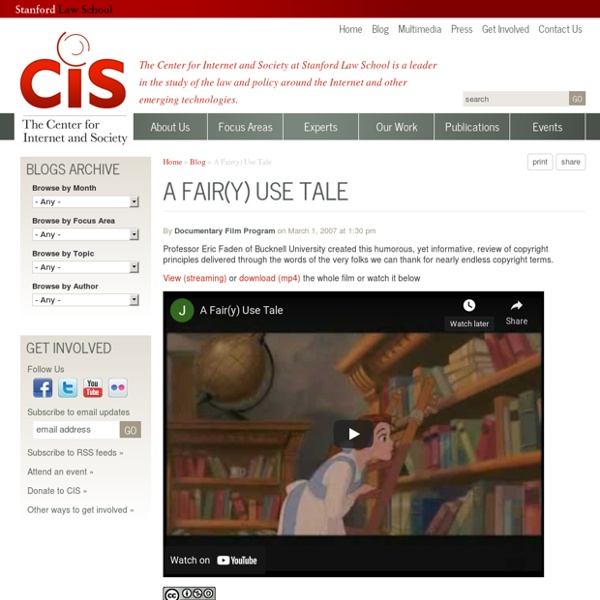



http://cyberlaw.stanford.edu/blog/2007/03/fairy-use-tale
Merriam-Webster's Word Central Other Side of Plagiarism Most of my Head for the Edge columns, updated and edited, can be found in my latest book. Buy it and I might be able to afford a nicer nursing home one day. Thank you. The Other Side of Plagiarism Fair Use Scenarios The principles and limitations [of Fair Use] are designed to guide your reasoning and to help you guide the reasoning of others. "The Code of Best Practices in Fair Use" Center for Media & Social Impact It's long been my contention that you can't "teach" values. Fighting Plagiarism This article will focus on the importance of structuring research projects so they require original thought. The student will not just find an answer. The student will build an answer. It is a bit like cooking a spaghetti sauce from scratch. The research process is a shopping expedition. The student is looking for great ripe tomatoes, red peppers, onions, mushrooms and spices.
Copyright and Primary Sources How do I use the Restriction Statements that accompany the American Memory collections? The Library of Congress assesses materials for legal considerations prior to placing items online (see legal assessment). The Restriction Statement that accompanies each American Memory collection provides known information regarding ownership of materials in the collection. If known, we include contacts for permission. Copyright-CopyWrong The Educators' Lean and Mean No FAT Guide to Fair Use By Hall Davidson You can't afford to ignore the law, but neither can you afford to overlook the needs of your students. The good news for educators heading into a new millennium is that abiding by--and helping to shape--fair use copyright principles and guidelines is really not that difficult. For help, read on. Is it legal for students to use copyrighted clips from videos, CDs, or the Internet to create multimedia reports?
Anti-Plagiarism Strategies Robert Harris Version Date: May 18, 2015 Earlier versions: December 30, 2013; February 28, 2012; December 18, 2010; June 14, 2009; November 17, 2004 The availability of textual material in electronic format has made plagiarism easier than ever. Copying and pasting of paragraphs or even entire essays now can be performed with just a few mouse clicks. The strategies discussed here can be used to combat what some believe is an increasing amount of plagiarism on research papers and other student writing.
Motion Picture Licensing Corporation